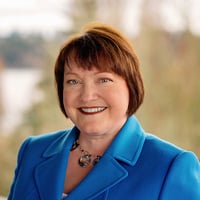
Last year, I underwent the rather unpleasant experience of dealing with trigger finger. It’s definitely not as cool as it sounds and has nothing to do with shooting nor cowboys. In fact, it was painful. After the usual procrastination when it comes to dealing with such things, I made the decision to undergo surgery to fix the problem. (Jump to the end….it was successful.)
But what really stuck in my mind as an HR professional was the teamwork I witnessed during the operation. You’re awake during this kind of surgery, providing a rare view into the workings of an operating room team. As I lay there trying not to think about what was happening to my hand, I found myself observing the team dynamics around me. What made this team operate so smoothly? Why do so many teams in corporations struggle by comparison?
Here are five elements that supported the operating room team’s success, and that in whole or part may be missing in most struggling teams.
- Clear Leadership
My surgeon was in charge. He commanded respect. This showed up in how he gave direction, provided information, and asked questions. Each interaction was respectful, calm, and appropriate. He exuded confidence without cockiness, and authority without aggression. In contrast, some teams fail to define and empower leadership, which results in the emergence of fiefdoms, decreased productivity and organizational confusion.
- Shared Mission
It seems obvious that the mission was to fix my hand, but it went beyond that. Each team member strived to ensure my comfort, provide information, and maintain a high level of professionalism. Later, I looked at their posted mission. It starts with “A patient-focused approach to deliver excellence...”. It continues with “We accomplish our goal by delivering professional & compassionate healthcare to every patient in a welcoming environment.”
Interesting how the work of orthopedic and sports medicine was balanced with behaviors that support the exceptional customer experience. When a team is bound by its mission, there is little opportunity for distraction.
- Role Clarity
Like a well-oiled machine of many parts, the operating room team seemed to know just when to move and when to stop. From technicians to the anesthesiologist, to nurses, each person simply did what they were supposed to do without confusion. There was no ambiguity about who would put a warm blanket on me, who would hand instruments to the surgeon, and who would wheel me into the recovery area.
Yet on so many corporate teams, employees voice confusion about their responsibilities and levels of authority. As HR professionals, we can easily point to the need for a job description, but more often the solution likes in clear communication about behavioral expectations and desired results.
- Ongoing Mentoring
My surgical team included a nurse in training and a younger doctor who was assisting with the surgery. The balance of teaching, guiding, and supervising was evident in the way these individuals were provided with information and opportunities to do the task rather than simply It was natural, not scripted nor forced.
I got the impression that my doctor and primary nurse truly enjoyed supporting the success of the individuals. I think that is something we all enjoy. I often hear things like “we need a mentoring program” and “I don’t have time to train anyone.” Great mentoring is relationship-based and doesn’t need to be programmatic. Great mentoring happens when managers feel intrinsically rewarded as their team members succeed.
- Communication Dexterity
With nothing to do but watch and listen, I had plenty of time during my surgery to take in the conversations happening around me. I noticed the doctors shift from surgical topics to mountain climbing. I heard the nurses inventorying equipment and then laugh as we talked about the fact that hospital gowns are in dire need of a fashionable overhaul. My anesthesiologist communicated important information to the surgeon and held an ongoing conversation with me to assess pain and comfort.
In every conversation, I heard a calm and friendly tone that made me feel more relaxed.
The team knew that despite the myriad of topics under discussion, it was most important to maintain an air of confidence and kindness. When communication styles are deftly adjusted to address the need and audience, the team gets the necessary information while remaining cohesive and engaged.
When team leaders understand their own communication style, and how to read that of others, they are more effective in supporting productivity and minimizing distractions.
I learned a lot that day in the operating room. I witnessed teamwork at its best and in its purest form.
I thought about the teams I interact with, and pressure-tested these five elements against the best and the worst. The best team I’ve worked with checks the box on all five elements. Interestingly, that team was intentionally formed by assessing not just job qualifications, but also values-based criteria such as dedication to client service, integrity, approachability, and composure.
If we take a holistic approach to hiring and team-building; going beyond the hard skills to explore non-technical competencies, we will likely find success in creating that elusive well-oiled machine.
About the Author
 A results-driven human resources leader, Kendra develops and implements talent solutions that fuel company strategy and enhance organizational effectiveness. She draws from her background in business management and over 20 years in top HR roles at technology, professional services and nonprofit organizations to optimize human resources in regional, national and global environments.
A results-driven human resources leader, Kendra develops and implements talent solutions that fuel company strategy and enhance organizational effectiveness. She draws from her background in business management and over 20 years in top HR roles at technology, professional services and nonprofit organizations to optimize human resources in regional, national and global environments.
Kendra has expertise in organizational design, change management, M&A integration, large-scale HR project management, internal communications, management training and leadership development. With a collaborative and energized style, she brings trusted business partnership and a fresh perspective that aligns talent, business and culture.
Kendra is a certified Senior Professional in Human Resources (SPHR), certified DiSC® facilitator, and Senior Certified Professional through the Society for Human Resources Management (SHRM-SCP). She has a BSBA from the University of Denver. She is an instructor with Lake Washington Technical College’s Leadership Development Program and Seattle Jobs Initiative/South Seattle Community College’s workforce readiness initiative.
- Kendra Fuller, SPHR, SHRM-SCP, Senior Consultant
